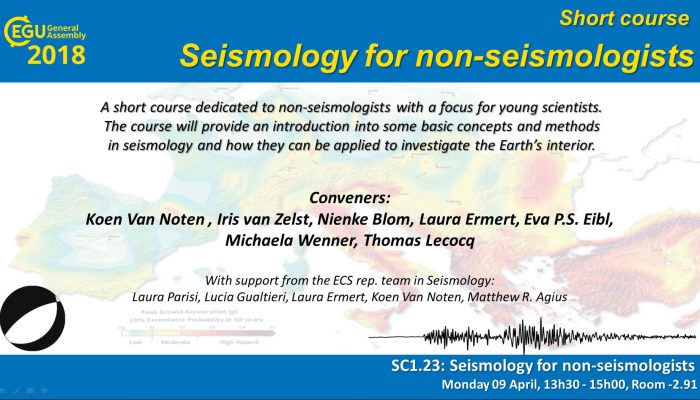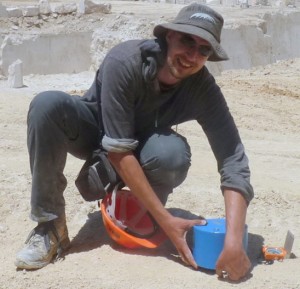
Short Course at EGU2018, organized by the ECS-Team of the Seismology Division
Title: SC1.23 – Seismology for Non-Seismologists
Time: Monday 9 April, 13:30 – 15:00
Location: Room -2.91
Are you getting ready for the upcoming General Assembly EGU2018? Consider attending our short course in Seismology on Monday. How do seismologists detect earthquakes? How do we locate them? Is seismology only about earthquakes? Seismology has been integrated into a wide variety of geo-disciplines to be complementary to many fields such as tectonics, geology, geodynamics, volcanology, hydrology, glaciology and planetology.
In this short course, dedicated to non-seismologists and particularly to early career scientists, an introduction to the basic concepts and methods in seismology will be presented. An overview will be given on various methods and processing techniques, which are applicable to investigate surface processes, near-surface geological structures and the Earth’s interior. The course will highlight the role that advanced seismological techniques can play in the co-interpretation of results from other fields.
The topics covered this year will include a demonstration of earthquake detection and location, introduction how to use free seismo-live.org tutorials and how the Earth’s structure can be studied using earthquakes, ambient noise and seismic array instrumentation. We will also discuss the link between earthquakes and tsunamis, environmental seismology, and how felt earthquake reports can be used in earthquake communication.
We likely won’t turn you in the next Charles Richter in 90 minutes, but would rather like to make you aware how seismology can help you in geoscience. The intention is to discuss each topic in a non-technical manner, emphasizing their strengths and potential shortcomings. This course will help non-seismologists to better understand seismic results and can facilitate more enriched discussion between different scientific disciplines. The 90-minute short course is organised by early career scientist seismologists and geoscientists who will present examples from their own research experience and from high-impact reference studies for illustration. 15-20 minutes will be reserved for questions from the audience on the topics covered by the short course and general seismology.
By Koen Van Noten
Koen Van Noten is a structural and earthquake geologist at the Geological Survey of Belgium. He investigates the influence of site effects on intraplate earthquake ground motions by Did You Feel It?” macroseismic data and near-surface geophysical techniques. Koen’s role as ECS is to encourage students to promote their results in seismology, geology and near-surface geophysics in various ways.

